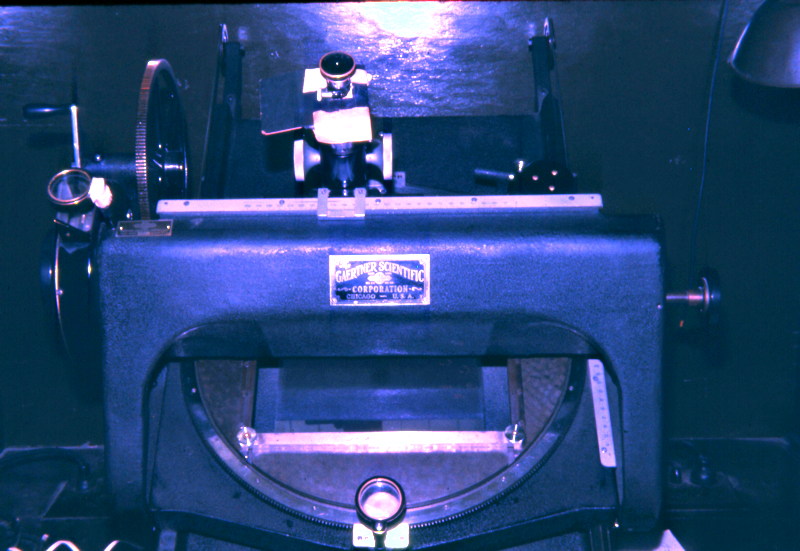Venus, ISS,
IU Asteroid Goethe Link
Posted: 17 May 2020
|
Open: Saturday, 16 May 2020, 1804 MST Temperature: 96°F |
Session: 1477 Conditions: Clear |
Equipment:
12" f/8 LX600 w/StarLock
2" 24mm UWA eyepiece
2" 9mm 100° eyepiece
2" 2X Powermate
Camera:
iPhone 11 Pro Max
D850 DSLR
SYNCed the observatory clock to WWV time signals.
1810 MST: LX600 ON, StarLock OFF, High Precision OFF.
Viewed the planet Venus, 102X, 271X, and 542X. Seeing was not very good.
I then began relaxing on the observatory patio bench.

I would occasionally return to the 12" telescope to check Venus and the seeing conditions. I also updated the TLE for this night's excellent pass of the International Space Station (ISS).
1822 MST: mounted the iPhone 11 Pro Max on the 2" 9mm eyepiece (+ 2X Powermate) using the Levenhuk Smartphone Adapter. 2537 video frames were stacked for this afocal 542X image of Venus taken with the iOS Camera app (slo-mo, 240fps, 1X lens).

1856 MST: some thin clouds began appearing in the sky. I hoped they would not become a problem, but they did later in the night.
1914 MST: checked the alignment of the finderscopes for the upcoming ISS pass.
1917 MST: last look at Venus, 271X and 102X.
1920 MST: sunset.
1925 MST: dome OFF. The Space Station would be passing very close to the Zenith so moving the dome OFF onto the POD Zenith Table (PZT) was necessary.
Mounted the D850 DSLR at prime focus, focused on the star Regulus using the Meade Bahtinov Mask, and locked the 12" primary mirror using the ScopeStuff mirror lock.
1957 MST: all was ready for the ISS pass (2010 MST).
During the pass, tracking was fairly accurate. This is a single frame (cropped) from the video recording made with the D850 DSLR (2160p, 30fps, 1/1600sec, ISO 1600). Some good details are visible.

I then mounted the D850 DSLR at prime focus + focal reducer for my planned asteroid imaging. SYNCed on the star Regulus, focused, and locked the mirror.
2035 MST: while relaxing on the patio bench waiting for Astronomical Twilight to end (2051 MST) I did some viewing using the Vortex 12x50 binoculars. Viewed M13 (Great Globular Cluster in Hercules), Mizar (double star in the Big Dipper), and M51 (Whirlpool Galaxy).
2049 MST: Meade Stella Wi-Fi Adapter ON.
Used SkySafari 6 Pro on the iPhone to GOTO Asteroid (1728) Goethe Link, Mag. +15.9.
2051 MST: StarLock ON.
2053 MST and 2153 MST: took StarLock autoguided images of Asteroid (1728) Goethe Link, 5 minutes, ISO 6400, White Balance 5560K. This night there was no autoguiding interference from SpaceX Starlink satellites. The bottom image shows the movement of the asteroid during the one hour.


I fell in love with asteroids as an undergraduate astrophysics student at Indiana University. In 1966, as a freshman, I worked on the IU Asteroid Program. I was on the Program for four years and even worked there full-time during the summer after graduation in 1970. I was one of several students who would measure star and asteroid positions on 8x10 inch photographic glass plates using the Gaertner Measuring Engine.

The plates were taken using one of the telescopes at Goethe Link Observatory, which was operated by IU at the time. I visited the Observatory only once as a student and that was a very short visit.
Photographing asteroids that are named for people and places that I know has become an obsession with me and I am thrilled to have added Asteroid Goethe Link to my collection of images on my Asteroids & Dwarf Planets album.
I tried imaging another asteroid but seeing had gotten too bad for accurate autoguiding, possibly due to thin clouds. I finally gave up.
2235 MST: took a Sky Quality reading.
2238 MST: Wi-Fi OFF, StarLock OFF.
I then tried to view Supernova 2020jfo in M61 (galaxy), 102X. Not visible (clouds?).
2250 MST: LX600 OFF.
2255 MST: dome ON.
|
Close: Saturday, 16 May 2020, 2304 MST Temperature: 64°F |
Session Length: 5h 00m Conditions: Mostly clear, SQM 21.17 |
Comments are welcome using Email. Twitter users can use the button below to tweet this report to their followers. Thanks.
Cassiopeia Observatory Home Page
Copyright ©2020 Michael L. Weasner / mweasner@me.com
URL = http://www.weasner.com/co/Reports/2020/05/17/index.html
